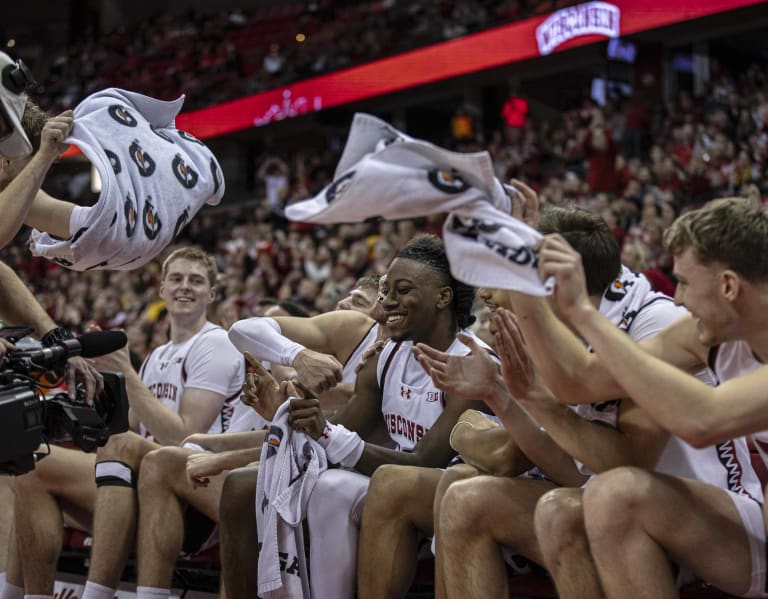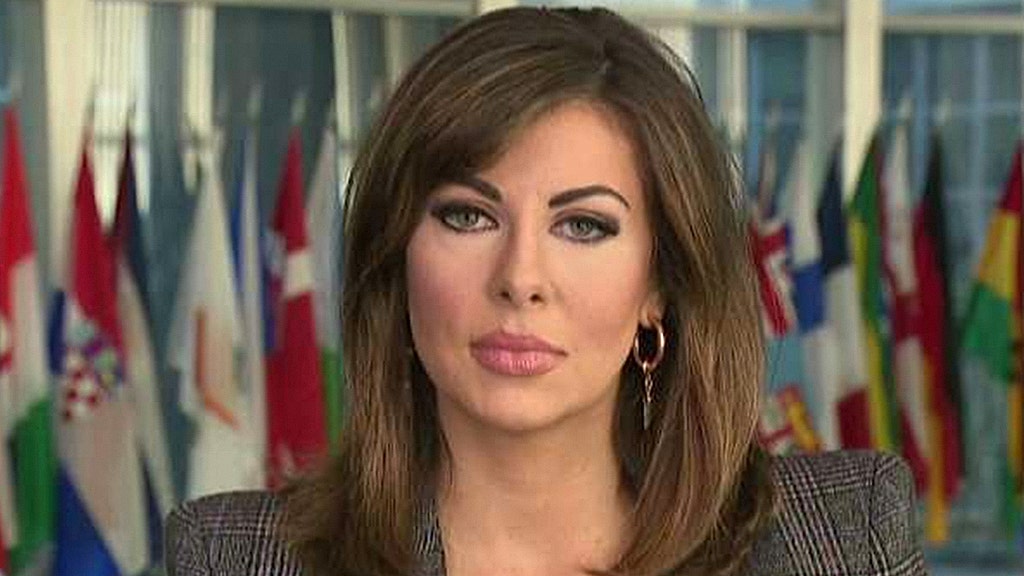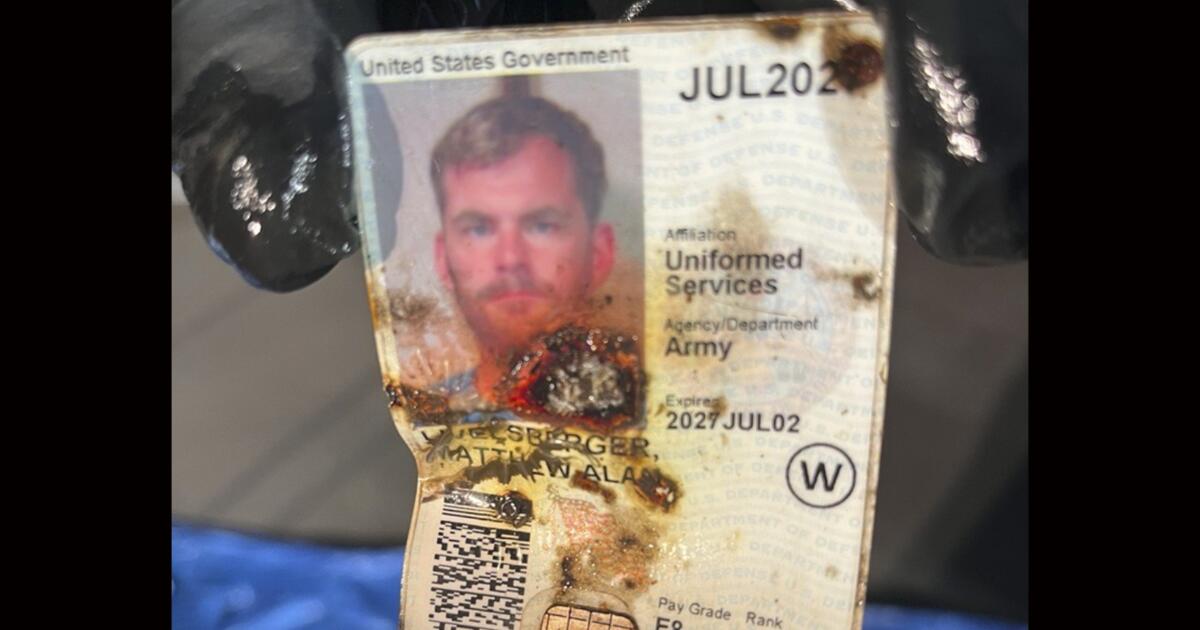New York
The Rabbi Whisperer: A Playwright Helps Sermon Writers Find Their Voice

Football players have the Super Bowl. Actors have the Oscars. For rabbis, it’s Rosh Hashana.
The Jewish New Year is a time of reflection and celebration. But for clergy, who preach to pews swelled with once-a-year attendees, it is a high-pressure moment: All eyes are on them to come up with the pitch-perfect sermon that will keep congregants inspired, engaged — and awake.
That is why rabbis from New York, Texas and beyond have been known to place a call for an unlikely source of backup: a former advertising executive from the Bronx.
Call her the Rabbi Whisperer. Over the past eight years, Michele Lowe has emerged as a resource for dozens of rabbis, becoming — to her surprise — something like a college-essay coach for the rabbinate. Via word of mouth, her contact information has been passed shul to shul each year by clergymen and women struggling with fine-tuning a phrase, delivering a punchline or solving a bad case of rabbis’ block.
“I call myself the ‘Jew in the pew,’” Ms. Lowe said in a recent interview during a break between clients. “I come and say, ‘I am here, and what do you want me to be thinking about for the next 12 months?’”
This year is one of her busiest: She is editing 33 sermons intended for Rosh Hashana, which begins Friday at sundown, and Yom Kippur, she said. “My job is to help these rabbis find their voice.”
When Ms. Lowe got a call from Rabbi Mara Nathan at Temple Beth-El in San Antonio, they chatted about how to add contemporary sparkle to sermons that would otherwise touch on ancient themes. The answer they came up with?
Barbie.
“On the High Holidays, suddenly you have 1,000 people listening instead of 150,” said Rabbi Nathan, who plans to blend lessons from the “Barbie” movie with those of Rabbi Hillel, the Babylonian theologian born in 110 B.C.E., into a sermon about embracing imperfection.
A decorated advertising executive, Ms. Lowe, 65, rose to prominence in the 1980s for producing well-known commercials for things like Miracle Whip and cat litter. She left the field to become a playwright, finding unusual early traction when her first play, “The Smell of the Kill,” about a trio of women who want to kill their husbands, was produced on Broadway in 2002.
The daughter of an interior designer and a furniture store owner from Massapequa Park, on Long Island, Ms. Lowe turned her critical eye on rabbinical sermons from an early age, when as a child she endured soporific speeches at her family synagogue. “The president of the temple used to stand up and tell people not to leave during the sermon,” she said. “He would get up and everybody would flock to the doors. It was awful.”
But it was not until 2015, when she watched a young rabbi struggle through a service, nervously flipping her loose hair at Westchester Reform Temple in Scarsdale, N.Y., that she decided to do something about it. She offered the woman tips gleaned from writing ad copy (“it has to be compelling; there has to be some drama in it”), as well as stagecraft (“plant your feet; make eye contact”).
And, she advised, wear a ponytail.
The next year she had three more rabbi clients. This year she is juggling 16. “Never in a million years did I dream I would even do it one more time,” said Ms. Lowe, whose clients nearly all lead Reform congregations. “But it’s really meaningful for me to do this work; rabbis work so hard, and there is so much at stake for them.”
Over the course of the new year, Rosh Hashana, and Yom Kippur, the somber day of atonement that follows over a week later, rabbis often give four sermons or more. Often interweaving contemporary culture, Judaic teachings and calls to action, some speeches can be highly politicized, others studiously neutral. They come as a halftime break in long ceremonies of prayers and scripture and are invariably hotly discussed over holiday meals. Rabbis say they receive criticism or praise for their High Holiday sermons all year long.
The pressure to make an emotional mark from the pulpit is real.
Ms. Lowe is part cheerleader, part writing coach. She instructs her clients, who are mainly women, to write three different introductions for their sermons, in different tones, from which they pick the winner. She spends the months leading up to the holidays in Zoom sessions and on shared Google docs, encouraging her clients to dig deeper for personal meaning, or to give their phrasing some punch — or, in Yiddish, a little zetz.
Her advice does not come cheap. Ms. Lowe charges $400 for each one-hour coaching session. That fee includes her prep work: reading and editing the rabbis’ sermons.
One key to a compelling sermon, Ms. Lowe said, is making it personal; often she has to push rabbis steeped in scripture to open up. “I’ll tell them, you have Torah, you have a call to action, it sounds really great,” she said. “But there’s one thing missing — you’re not in here.”
Sometimes, her help is more pragmatic, like the tip she gave Rabbi David E. Levy, now of Temple Beth-El of City Island in the Bronx, to stop him from futzing with his skullcap, or yarmulke, while he spoke.
“I said, ‘go ask your wife what fashion tape is,’” Ms. Lowe said. (Rabbi Levy confirmed that for a time he taped his yarmulke to his head, but now no longer has to.)
Rabbis have sought outside counsel for their sermons ever since the Torah was written, but it is most typically from other religious scholars, said Rabbi Motti Seligson, a spokesman for Chabad Lubavich, a Hassidic Jewish group. The Talmud, the foundational text of Jewish learning, is full of stories of rabbis putting their heads together to hash out the finer points of Judaic principals.
This new year, 5784 by the Jewish calendar, is no different, Rabbi Seligson said: “Rabbis may talk amongst themselves about OK, it’s 5784, and what is important for our congregation to hear, this year?” he said. “The delivery is obviously important, but what would be more important is: What is that message from the Torah this year?”
For Rabbi Nathan in Texas, that message is intrinsically tied up with politics; Ms. Lowe has helped her hone sermons in past years that put a Jewish lens on reproductive rights, the Black Lives Matter movement and welcoming migrants to her city of San Antonio. “You want people to walk away and be talking about what you said,” Rabbi Nathan said, “even if they disagree with you.”
But at Washington Hebrew Congregation in Washington, D.C., where congressional staffers from both parties pray, Rabbi Eliana Fischel and Ms. Lowe have worked on finding meaningful messages that are straight down the middle. “We try not to get into the weeds of politics — mostly because all of my congregation knows it better than I do,” Rabbi Fischel says.
Some of Ms. Lowe’s clients are confidential, concerned to be seen as needing a crutch. At first, Dara Frimmer, a rabbi at Temple Isaiah on Los Angeles’s Westside, was reluctant to share that she had sought help on a sermon.
“There is a fear that rabbis have to be wholly original and brilliant and poised and always have the right words,” Rabbi Frimmer said. But she came to realize that turning to community in a time of need was a profoundly Jewish ideal. “With great pride I wrote at the bottom: ‘Thank you to Michele Lowe.’”
Audio produced by Tally Abecassis.

New York
Rudy Giuliani, Slow to Transfer Assets to Election Workers, Could Be Held in Contempt

Rudolph W. Giuliani, the former mayor of New York, was grilled for hours in federal court on Friday after missing several deadlines to hand over $11 million of his prized possessions to two poll workers he defamed after the 2020 election.
Mr. Giuliani avoided, for now, being held in contempt of court — a charge he has been threatened with at various times during the case and that could include jail time.
But for most of his time on the stand, Mr. Giuliani frustrated the judge and the plaintiffs’ lawyers with a spotty memory and vague answers that slowed to a crawl proceedings that were already bogged down in minutiae.
For much of the seven-hour hearing, lawyers on both sides were preoccupied with the question: Where have you gone, Joe DiMaggio?
One of the central items of Mr. Giuliani’s collection of sports memorabilia is a jersey signed by Mr. DiMaggio, the Yankees legend, that hung over the former mayor’s fireplace. On Friday, Mr. Giuliani said he had no idea where it was.
That was not the only missing Yankees great.
“There is no Reggie Jackson picture,” Mr. Giuliani said, referring to the right-fielder known as Mr. October. He had previously said in court documents that the picture would be handed over to the plaintiffs. But now, the photo didn’t exist, according to Mr. Giuliani. “The picture was Derek Jeter,” he said. “I was kind of confused about it.”
The judge, Lewis J. Liman, appeared skeptical of Mr. Giuliani’s puzzlement, noting that such a rare collectible, especially for an avowed Yankees fan, would be top of mind.
“I’m sorry,” Mr. Giuliani said in response to questions about the collectibles, and a number of other items that were expected to be found in his New York apartment. “When I looked, this is what I found.”
At the heart of the contempt charges he continues to face is whether Mr. Giuliani, 80, has been uncooperative with the handover of his personal assets, which will serve as a small down payment on the $148 million defamation judgment that he owes the plaintiffs, Ruby Freeman and her daughter, Shaye Moss. Mr. Giuliani said, repeatedly and without evidence, that the women helped steal the presidential election from Donald J. Trump more than four years ago.
The assets include a 10-room apartment on the Upper East Side of Manhattan; a 1980 Mercedes-Benz convertible; a collection of 26 designer watches; and rare Yankees collectibles, the most valuable of which might be the signed and framed DiMaggio jersey.
More than two months after a federal court judge ordered Mr. Giuliani to hand over the items, the former mayor and his lawyers contend that he has tried to comply fully, but that the process has been onerous.
“Mr. Giuliani is an 80-year-old man who has been hit by a whirlwind of discovery,” said Joseph M. Cammarata, Mr. Giuliani’s lawyer, who specialized in divorce cases before joining the defense team. Mr. Giuliani is also facing civil and criminal charges in other cases, stemming from his time as Mr. Trump’s personal lawyer.
In roughly three hours on the stand on Friday, Mr. Giuliani repeatedly responded that he could not remember details about his personal items or their whereabouts.
While pressing Mr. Giuliani, Meryl Governski, one of the lawyers for the plaintiffs, turned her attention to a checking account subject to the seizure.
“Where does it say that you turned over the cash?” she asked Mr. Giuliani, pointing out an omission in a recent letter he wrote to the court.
Mr. Giuliani, flipping through a bulky binder of materials, appeared flustered. “Are we talking about the Mercedes now?” he said.
As the hearing dragged on, lawyers on both sides seemed to test Judge Liman’s patience. After a long series of objections by Mr. Cammarata, nearly all of them overruled, Judge Liman chastised the defense.
“If you have one more speaking objection, sir, you’re going to have to sit down,” he said. “You know the rules.”
On Thursday, Mr. Giuliani’s lawyer asked if his client could appear virtually, because of medical issues related to his left knee, as well as breathing problems attributed to Mr. Giuliani’s time spent at the World Trade Center after the Sept. 11 attacks.
But Judge Liman, who had a testy exchange with Mr. Giuliani about the case in November, said he would not accept Mr. Giuliani’s testimony unless he attended in person. So the former mayor, in a dark blue suit and glasses, walked into the 15th floor courtroom on Friday with a visible limp and a dry cough.
The transfer was originally scheduled to take place in late October. But one deadline after another has passed, and lawyers for the women said they have received only a fraction of the property.
The women have yet to receive legal possession of Mr. Giuliani’s apartment, once listed for over $6 million, in part because paperwork has not been updated since his divorce from his ex-wife Judith Giuliani, according to court filings. The title to Mr. Giuliani’s convertible, which he said was once owned by Lauren Bacall, has yet to be transferred.
But Mr. Giuliani raised eyebrows on Election Day, when he appeared in the passenger seat of the same convertible, more than a week after the initial turnover deadline. On Friday, he said he has requested a copy of the title to the car three times, but has yet to receive it.
In November, Mr. Giuliani’s original lawyers withdrew from the case, citing an undisclosed professional ethics reason.
In a recently unsealed letter explaining their departure, one of the lawyers, Kenneth Caruso, a longtime friend of Mr. Giuliani, said his client was not cooperating in the discovery process related to a condominium he owns in Palm Beach, Fla., and was withholding access to his electronic devices.
The judge will determine on Monday whether Mr. Giuliani was uncooperative during the discovery process. A separate hearing will be held to discuss his turnover efforts.
Later this month, Mr. Giuliani also faces the possibility of contempt charges in a Washington, D.C., court, where he has been accused of continuing to publicly make false claims about the two Georgia poll workers.
On Jan. 16, Mr. Giuliani is expected back in court to argue that his Palm Beach condo, as well as three personalized Yankees World Series rings, should be excluded from the handover.
Outside the courthouse, at a prepared mic stand, Mr. Giuliani, who typically appeared energized and combative, demurred.
“It would be inappropriate and unwise to say a darn thing about this case right now,” he said.
New York
9 Plays to Warm Up Winter in New York

In New York, Broadway hits its winter lull in January, as Off Broadway and beyond burst into activity. If most of the tourists have gone home after the holidays, many of the visiting theater artists have arrived from all over, for the annual festivals that draw a tantalizing breadth of new work.
The venerable Under the Radar festival (Saturday through Jan. 19), now in its post-Public Theater era, is blossoming lushly again, with some of the city’s major companies participating. The Prototype Festival (Thursday through Jan. 19) has a full menu of interdisciplinary opera, while the Exponential Festival (through Feb. 2) centers local emerging experimental theater makers. There’s also the International Fringe Encore Series (through March 16), whose lineup includes “Gwyneth Goes Skiing,” one of two Gwyneth Paltrow-focused shows at last year’s Edinburgh Festival Fringe.
It’s a bountiful month, on festival stages and elsewhere. Here are nine shows worth keeping in mind.
‘Blind Runner’
In this hourlong play by the Iranian writer-director Amir Reza Koohestani, a political prisoner in Tehran asks her husband to help a young woman, who was blinded in a protest, to run a marathon in Paris. The more dangerous race is the one they undertake from there: trying to cross the English Channel through the tunnel without being hit by a train. A two-hander performed in Persian with English supertitles, and presented with Arian Moayed’s company, Waterwell, it’s about surveillance, oppression and the insistent pursuit of freedom. The critic Michael Billington called it “mesmerizing.” Part of Under the Radar. (Saturday through Jan. 24, St. Ann’s Warehouse)
‘Wonderful Joe’
The Canadian puppet artist Ronnie Burkett is a marvel to watch, manipulating populous casts of marionettes all on his own. Too seldom seen in New York, he arrives this month for a brief run of his new play, which landed on The Globe and Mail’s top-10 list of 2024 shows. The story is about an old man, Joe, and his aged dog, Mister, who lose their home to gentrification and hit the streets, approaching misfortune as adventure. This is not puppetry for little ones, though; audience members must be 16 or older. Part of Under the Radar. (Tuesday through Jan. 12, Lincoln Center)
‘Dead as a Dodo’
The company Wakka Wakka (“The Immortal Jellyfish Girl”) descends into the underworld with this sparkling puppet piece about a pair of skeletons: a dodo and a boy. Their ancient bones are in the process of disintegrating. Then, out of nowhere, the bird grows a new bone, sprouts fresh feathers — and is apparently not dead as a dodo after all. Directed by Gwendolyn Warnock and Kirjan Waage, who wrote it with the ensemble, this show is recommended for ages 7 and up. But be warned: Wakka Wakka does not shy from darkness. Part of Under the Radar. (Wednesday through Feb. 9, Baruch Performing Arts Center)
‘Old Cock‘
American history and politics are Robert Schenkkan’s dramatic bailiwick. He won a Pulitzer Prize for “The Kentucky Cycle” and a Tony Award for “All the Way.” And Brian Cox starred as Lyndon B. Johnson in Schenkkan’s most recent Broadway production, “The Great Society.” For this satire, though, the playwright teams up with the Portuguese company Mala Voadora and the director Jorge Andrade to tell a distinctly Portuguese story, pitting the rooster that is a symbol of that country against António de Oliveira Salazar, the dictator who ruled it for decades. Part of Under the Radar. (Wednesday through Jan. 19, 59E59 Theaters)
‘Grief Camp’
Eliya Smith, a master of fine arts candidate at the University of Texas at Austin whose previous forays into New York theater include the intriguingly strange, fragmented elegy “Deadclass, Ohio,” makes her Off Broadway playwriting debut with this world premiere. Directed by the Obie Award winner Les Waters (“Dana H.”), it’s about a group of teenagers in a summer cabin in Hurt, Va., confronting loss. And, yes, even this camp has a resident guitarist. (Thursday through Feb. 16, Atlantic Theater Company)
‘Show/Boat: A River’
The experimental company Target Margin Theater does not pussyfoot when it comes to re-examining canonical classics. Adapted and directed by David Herskovits, this interpretation of “Show Boat” aims to reframe the Jerome Kern and Oscar Hammerstein II musical from 1927, about the entertainers and others aboard a riverboat on the Mississippi in the late 19th and early 20th centuries. Groundbreaking in its time for its themes, including racism and interracial marriage, “Show Boat” has long been accused of being racist itself. The content advisory warns: “The production includes racially offensive language and incidents.” Part of Under the Radar. (Thursday through Jan. 26, N.Y.U. Skirball)
‘A Knock on the Roof’
The Golan Heights-based writer-performer Khawla Ibraheem plays a Gazan woman rehearsing what she will do if she hears a low-level warning bomb — a “knock on the roof” by the Israeli military — which would mean she had only minutes to evacuate her home before an airstrike escalated. Directed by the Obie winner Oliver Butler (“What the Constitution Means to Me”), who developed the play with Ibraheem, it won awards at the Edinburgh Festival Fringe this summer. Part of Under the Radar, this production moves to the Royal Court Theater in London in February. (Jan. 10 through Feb. 16, New York Theater Workshop)
‘The Antiquities’
Jordan Harrison’s new play imagines a history of the Late Human Age as told by the “nonorganic beings” who will succeed us. Starting on the night in 1816 when Mary Shelley told her ghost story, it hops through time to 2240. Building on themes Harrison contemplated in “Marjorie Prime,” it’s about what it is to be human, and whether we’ve sown the seeds of our destruction. Produced with the Vineyard Theater in New York and the Goodman Theater in Chicago, where it is slated to run this spring. David Cromer and Caitlin Sullivan direct. (Jan. 11 through Feb. 23, Playwrights Horizons)
‘Vanya on Huron Street’
The writer-director Matthew Gasda, who first gained traction a few years back with his scenester play “Dimes Square,” now stages an adaptation of Chekhov’s “Uncle Vanya,” created with its actors over the past year. Bob Laine, a star of “Dimes Square” (which makes a fleeting return this month), plays the title role in “Vanya,” opposite fellow “Dimes Square” cast member Asli Mumtas as Vanya’s longed-for love interest, Yelena. (Jan. 14 through Feb. 4, Brooklyn Center for Theater Research)
New York
Video: Adams’s Former Chief Adviser and Her Son Charged With Corruption

new video loaded: Adams’s Former Chief Adviser and Her Son Charged With Corruption
transcript
transcript
Adams’s Former Chief Adviser and Her Son Charged With Corruption
Ingrid Lewis-Martin, who resigned as Mayor Eric Adams’s chief adviser, and her son, Glenn D. Martin II, were charged with taking $100,000 in bribes from two businessmen in a quid-pro-quo scheme.
-
We allege that Ingrid Lewis-Martin engaged in a long-running bribery, money laundering and conspiracy scheme by using her position and authority as the chief adviser of — chief adviser to the New York City mayor, the second-highest position in city government — to illegally influence city decisions in exchange for in excess of $100,000 in cash and other benefits for herself and her son, Glenn Martin II. We allege that real estate developers and business owners Raizada “Pinky” Vaid and Mayank Dwivedi paid for access and influence to the tune more than $100,000. Lewis-Martin acted as an on-call consultant for Vaid and Dwivedi, serving at their pleasure to resolve whatever issues they had with D.O.B. on their construction projects, and she did so without regard for security considerations and with utter and complete disregard for D.O.B.’s expertise and the public servants who work there.
Recent episodes in New York
-

 Business1 week ago
Business1 week agoOn a quest for global domination, Chinese EV makers are upending Thailand's auto industry
-

 Health6 days ago
Health6 days agoNew Year life lessons from country star: 'Never forget where you came from'
-
/cdn.vox-cdn.com/uploads/chorus_asset/file/24982514/Quest_3_dock.jpg)
/cdn.vox-cdn.com/uploads/chorus_asset/file/24982514/Quest_3_dock.jpg) Technology6 days ago
Technology6 days agoMeta’s ‘software update issue’ has been breaking Quest headsets for weeks
-

 World1 week ago
World1 week agoPassenger plane crashes in Kazakhstan: Emergencies ministry
-

 Politics1 week ago
Politics1 week agoIt's official: Biden signs new law, designates bald eagle as 'national bird'
-

 Business3 days ago
Business3 days agoThese are the top 7 issues facing the struggling restaurant industry in 2025
-

 Politics1 week ago
Politics1 week ago'Politics is bad for business.' Why Disney's Bob Iger is trying to avoid hot buttons
-

 Culture3 days ago
Culture3 days agoThe 25 worst losses in college football history, including Baylor’s 2024 entry at Colorado














